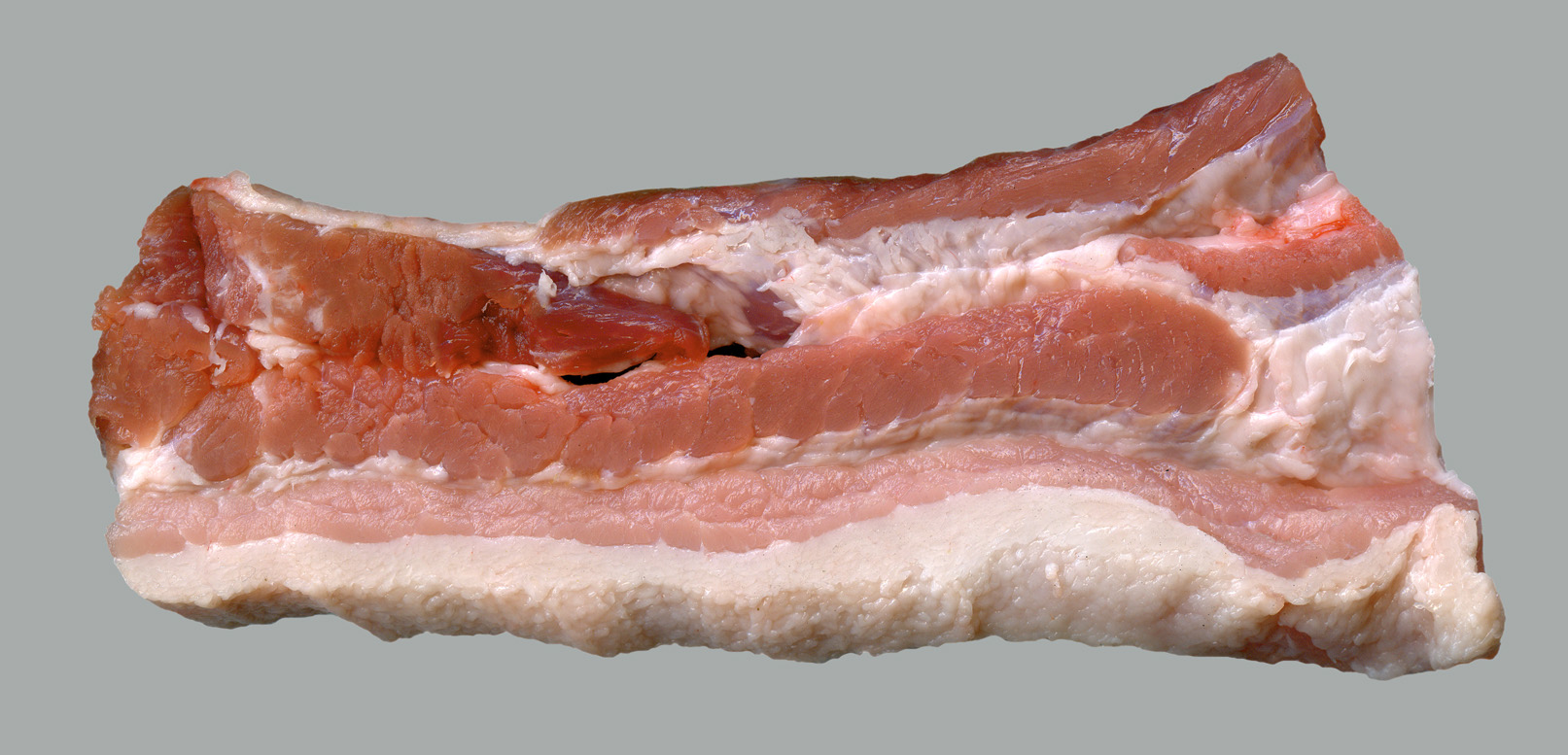|
Zapiekanka
A ' (; plural: ', ) is a toasted open-face sandwich made of a sliced baguette or other long roll of bread, topped with sautéed Agaricus bisporus, white mushrooms, cheese and sometimes other ingredients such as ham. Served hot with ketchup, it has been a popular street food in Poland since the 1970s. Etymology The Polish language, Polish word ' comes from the verb ', which means "to bake a dish so that its ingredients combine, and a crispy, browned crust forms on top," and may refer to various casseroles and other foods prepared in this manner. Preparation and varieties A typical ' is made from one half of a baguette, or any other long roll of white bread, cut lengthwise, as for a submarine sandwich. It may be up to long. The bread is topped with sliced, sautéed Agaricus bisporus, white mushrooms and grated cheese to form an open-face sandwich, which is then toasted until the bread becomes crisp and the cheese melts. Hard, mature yellow cheese with high fat content that ... [...More Info...] [...Related Items...] OR: [Wikipedia] [Google] [Baidu] [Amazon] |
Polish Cuisine
Polish cuisine ( ) is a style of food preparation originating in and widely popular in Poland. Due to History of Poland, Poland's history, Polish cuisine has evolved over the centuries to be very eclectic, and shares many similarities with other national cuisines. Polish cooking in other cultures is often referred to as ''à la polonaise''. Polish cuisine is rich in meat, especially pork, chicken and game, in addition to a wide range of vegetables, spices, fungi and mushrooms, and herbs. Polish Meals – Polish Food – Polish Cuisine . Retrieved 6 June 2011. It is also characterised by its use of various kinds of kluski, pasta, cereals, kasza, kasha and pulses. [...More Info...] [...Related Items...] OR: [Wikipedia] [Google] [Baidu] [Amazon] |
Baguette
A baguette (; ) is a long, thin type of bread of French origin that is commonly made from basic lean dough (the dough, not the shape, is defined by French law). It is distinguishable by its length and crisp crust. A baguette has a diameter of about and a usual length of about , but can be up to long. In November 2018, documentation surrounding the "craftsmanship and culture" of making this bread was added to the French Ministry of Culture's National Inventory of Intangible Cultural Heritage. In 2022, the artisanal know-how and culture of baguette bread was inscribed to the UNESCO Intangible Cultural Heritage Lists. History Much of the history of the baguette is speculation; however, some facts can be established. Long, stick-like breads in France became more popular during the 18th century, French bakers started using " ''gruau''," a highly refined Hungarian high-milled flour in the early 19th century, Viennese steam oven baking was introduced to Paris in 1839 by Augus ... [...More Info...] [...Related Items...] OR: [Wikipedia] [Google] [Baidu] [Amazon] |
Olive
The olive, botanical name ''Olea europaea'' ("European olive"), is a species of Subtropics, subtropical evergreen tree in the Family (biology), family Oleaceae. Originating in Anatolia, Asia Minor, it is abundant throughout the Mediterranean Basin, with wild subspecies in Africa and western Asia; modern Cultivar, cultivars are traced primarily to the Near East, Aegean Sea, and Strait of Gibraltar. The olive is the type species for its genus, ''Olea'', and lends its name to the Oleaceae plant family, which includes species such as Syringa vulgaris, lilac, jasmine, forsythia, and Fraxinus, ash. The olive fruit is classed botanically as a drupe, similar to the cherry or peach. The term oil—now used to describe any Viscosity, viscous Hydrophobe, water-insoluble liquid—was virtually synonymous with olive oil, the Vegetable oil, liquid fat made from olives. The olive has deep historical, economic, and cultural significance in the Mediterranean; Georges Duhamel (author), George ... [...More Info...] [...Related Items...] OR: [Wikipedia] [Google] [Baidu] [Amazon] |
Sweet And Sour Sauce
Sweet and sour is a generic term that encompasses many styles of sauce, cuisine, and cooking methods. It is commonly used in East Asia and Southeast Asia and has been used in England since the Middle Ages. Dickson Wright, Clarissa (2011) ''A History of English Food''. Random House. . Pages 52–53 Sweet and sour sauce remains popular in Asian and Western cuisines. By region East Asia Chinese cuisine Sweet and sour dishes, sauces, and cooking methods have a long history in China. One of the earliest recordings of sweet and sour may come from ''Shaowei Yanshi Dan'' (), a menu of the food served in Tang dynasty (618–907) "Shaowei banquet" festivals written in 708. It included many sweet and sour adjacent dishes and recorded that they were invented by Chancellor Wei Juyuan under Emperor Zhongzong of Tang when he hosted the Emperor at his house. Some authors say that the original sweet and sour sauce () came from the Chinese province of Henan, but the sauce in this area is a light v ... [...More Info...] [...Related Items...] OR: [Wikipedia] [Google] [Baidu] [Amazon] |
Pickled Cucumber
A pickled cucumber – commonly known as a pickle in the United States, Canada and Australia and a gherkin ( ) in Britain, Ireland, South Africa, and New Zealand – is a usually small or miniature cucumber that has been Pickling, pickled in a Brine (food), brine, vinegar, or other solution and left to ferment. The fermentation process is executed either by immersing the cucumbers in an acidic solution or through souring by lacto-fermentation. Pickled cucumbers are often part of mixed pickles. Historical origins It is often claimed that pickled cucumbers were first developed for workers building the Great Wall of China, though another hypothesis is that they were first made as early as 2030 BC in the Tigris Valley of Mesopotamia, using cucumbers brought originally from India. According to the New York Food Museum, archaeologists believe ancient Mesopotamians pickled food as far back as 2400 B.C. while, centuries later, cucumbers native to India were being pickled in the Tig ... [...More Info...] [...Related Items...] OR: [Wikipedia] [Google] [Baidu] [Amazon] |
Bacon
Bacon is a type of Curing (food preservation), salt-cured pork made from various cuts of meat, cuts, typically the pork belly, belly or less fatty parts of the back. It is eaten as a side dish (particularly in breakfasts), used as a central ingredient (e.g., the BLT, BLT sandwich), or as a flavouring or accent. Regular bacon consumption is associated with increased mortality and other health concerns. Bacon is also used for #Bacon fat, barding and larding roasts, especially game, including venison and pheasant, and may also be used to insulate or flavour roast joints by being layered onto the meat. The word is derived from the Proto-Germanic , meaning . Meat from other animals, such as beef, Lamb and mutton, lamb, chicken (food), chicken, goat meat, goat, or turkey meat, turkey, may also be cut, cured, or otherwise prepared to resemble bacon, and may even be referred to as, for example, "turkey bacon". Such use is common in areas with significant Kashrut, Jewish and Islamic ... [...More Info...] [...Related Items...] OR: [Wikipedia] [Google] [Baidu] [Amazon] |
Edam Cheese
Edam ( ) is a semi-hard cheese that originated in the Netherlands, and is named after the town of Edam in the province of North Holland. Edam is traditionally sold in flat-ended spheres with a pale yellow interior and a coat, or rind, of red paraffin wax. Edam ages and travels well and hardens, instead of spoiling, for an extended time. These qualities (among others) made it the world's most popular cheese between the 14th and 18th centuries, both at sea and in remote colonies.History of Edam Cheese Edam.com. Retrieved 11 April 2007 Content Most "young" Edam cheeses sold in stores have a very mild flavour, slightly salty or nutty, and almost no smell when compared to other cheeses. As the cheese ages, its flavour sharpens, and it becomes firmer. Edam may have as little as 28%[...More Info...] [...Related Items...] OR: [Wikipedia] [Google] [Baidu] [Amazon] |
Pizza
Pizza is an Italian cuisine, Italian, specifically Neapolitan cuisine, Neapolitan, dish typically consisting of a flat base of Leavening agent, leavened wheat-based dough topped with tomato, cheese, and other ingredients, baked at a high temperature, traditionally in a wood-fired oven. The term ''pizza'' was first recorded in 997AD, in a Latin manuscript from the Southern Italy, southern Italian town of Gaeta, in Lazio, on the border with Campania. Raffaele Esposito is often credited for creating the modern pizza in Naples.Arthur Schwartz, ''Naples at Table: Cooking in Campania'' (1998), p. 68. .John Dickie, ''Delizia!: The Epic History of the Italians and Their Food'' (2008), p. 186.Father Giuseppe Orsini, Joseph E. Orsini, ''Italian Baking Secrets'' (2007), p. 99. In 2009, Neapolitan pizza was registered with the European Union as a traditional speciality guaranteed (TSG) dish. In 2017, the art of making Neapolitan pizza was included on UNESCO's list of intangible cultura ... [...More Info...] [...Related Items...] OR: [Wikipedia] [Google] [Baidu] [Amazon] |
Oscypek
Oscypek (, Polish plural: ''oscypki''), rarely oszczypek, is a smoked cheese made of salted sheep milk exclusively in the Tatra Mountains region of Poland. Oscypek is made by an expert named "baca", a term also denoting a shepherd in the mountains. The cheese is a traditional holiday cheese in some European countries and is often pan-fried and served with cranberry jam (''żurawina'') on the side. Process and varieties A similar cheese is made in the Slovak Tatra Mountains under the name oštiepok. The cheeses differ in the ratio of their ingredients, the cheesemaking process and the characteristics of the final product. Oscypek needs to be made from at least 60% sheep's milk, and must weigh between 600 and 800g and measure between 17 and 23 cm. It can only be produced between late April to early October, when the sheep used is fed on fresh mountain grass. Oscypek is made using salted sheep's milk, with the addition of cows' or goats' milk strictly regulated by the pro ... [...More Info...] [...Related Items...] OR: [Wikipedia] [Google] [Baidu] [Amazon] |





